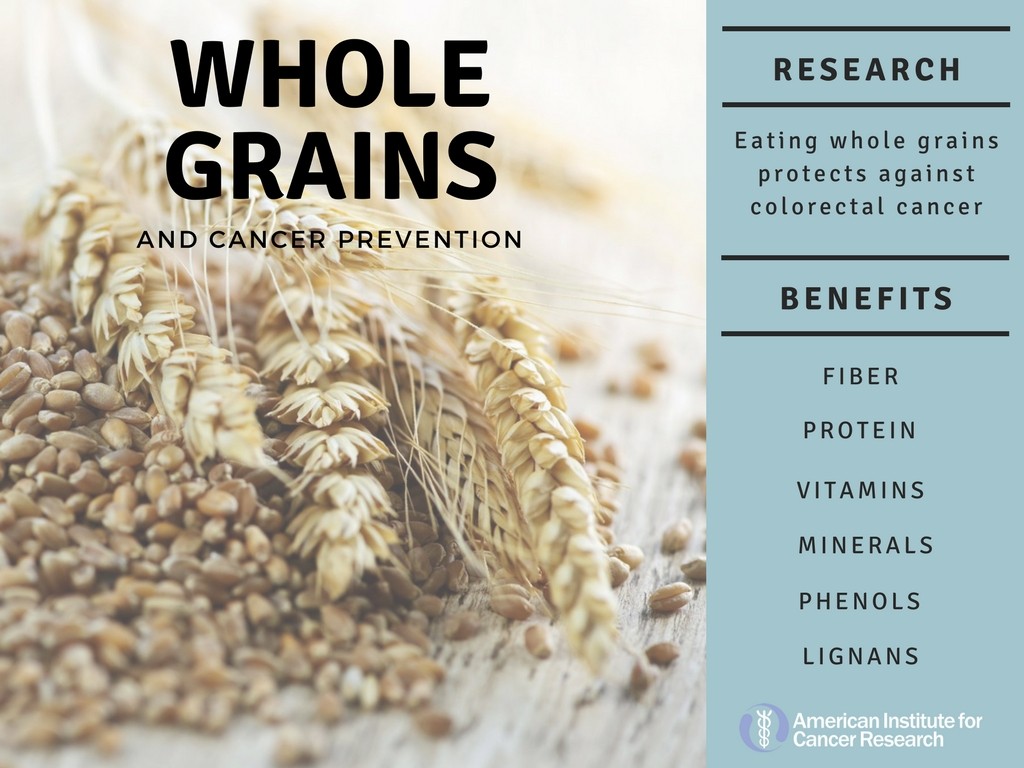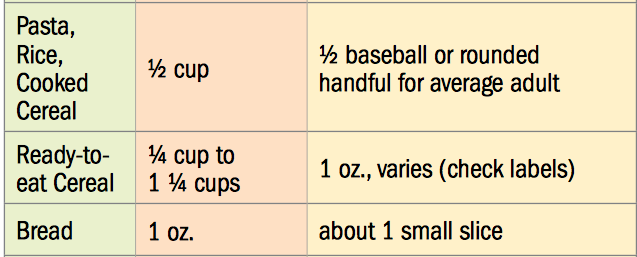AICR’s latest comprehensive update on colorectal cancer produced a delicious finding on how you can lower your risk for that disease. Simply swap out some refined grains, like white bread or white rice, for flavorful whole grain foods daily and you’ll create a more cancer-protective diet.
In the report, scientists found strong evidence, for the first time, that eating 90 grams (about 3 ounces) of whole grain foods daily reduces risk for colorectal cancer by 17 percent. Fewer amounts of whole grains provided some – but less – protection; greater amounts offered even more.
This may be due, the report says, to the many compounds in whole grain foods like fiber, vitamin E, selenium, lignans, phenols and others that have shown anti-cancer actions in lab studies.

I wrote about how to define a whole grain food a few weeks ago. Here’s how you can begin to choose more whole grain foods and eventually reach at least 90 grams or 3 ounces daily.
- An ounce of a whole grain food refers to cooked or prepared food, like rice, cooked grains, cold cereal or bread.

- Check serving size labels for bread and ready-to-eat cereals because bread slice sizes vary and an ounce of puffed cereal would be a larger measure than an ounce of granola cereal. (One ounce equals 28 grams.)
- Begin to substitute common whole grain foods like 100% whole wheat bread, brown rice and whole-grain pasta for white bread, white rice and white pasta.
- If you are new to whole grains, start by swapping out one refined grain a day and as that gets easier, make more and more swaps.
- An ounce of a whole grain food refers to cooked or prepared food, like rice, cooked grains, cold cereal or bread.
Here is one way to get your 3 ounces/90 grams of whole grain foods daily:
- Breakfast: 1/2 cup cooked oatmeal (instant or microwave for convenience)
- Snack: 3 cups popped popcorn
- Dinner: Soup, stew or stir-fry with cooked brown rice (1/2 cup per serving)
How will you substitute whole grain foods for refined grains?
For more information on whole grains and ideas on delicious ways to eat them, check out the tips section in our Foods that Fight Cancer: Whole Grains.







Thanks Alice. I found your description of what an ounce is to be most helpful!
Eating whole grains protects against cancer. Good Info!
Very quicfkly this site will be famou amid all bllgging
users, due to it’s good articles
Grains play an integral role in most diets because they are the primary energy source. Most common grains are generally consumed in refined forms, which are produced after the outer layer is removed. Compared to whole grain forms, refined grains contain a small amount of phenolic acids, as they are primarily present in the outer layer. Scientific evidence shows that regular consumption of whole grains bran part have shown to reduces the risks of many chronic non-communicable diseases, including cardiovascular, type 2 diabeties, obesity and cancer diseases. Because whole grains contain a wide range of dietary fibre, phenolic acids and other functional components, it’s important to figure out which of these components may have the greatest protective effect against specific diseases. Scientific evidence of the role of whole grains consumption in disease prevention is promising, but not conclusive, and more clinical trials and epidemiologic studies are needed. Future studies may address the question of whether whole grain bran, germ is directly associated to reduce risk of CVD, T2D, obesity and cancers, and whether the associations are primarily driven by dietary fibre, specific polyphenols, or some other related aspect of diet. Thus, it will be of interest to ascertain the independent effects of bran, germ and the different types of fibre and phenolic acids on chronic non-communicable diseases.
Hope will try to work in my PhD degree and will find the solution of how much we need to consume per day.